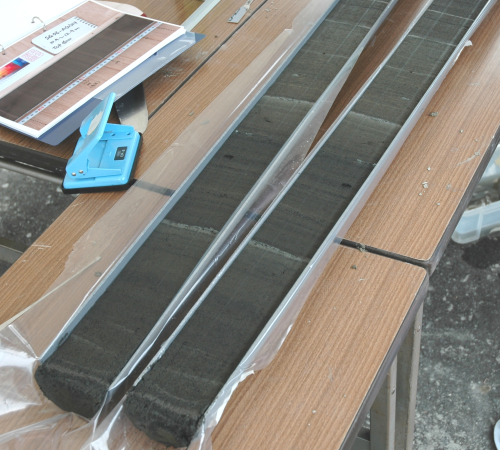Inversed Climate Trends in East Asia and Europe during the Younger Dryas Stadial – Evidence from Lake Suigetsu
Published: 2 April 2017
New evidence from Lake Suigetsu (Japan) shows evidence of a bi-partition of the Younger Dryas Stadial in East Asia and implies a climatic dipole between Europe and East Asia.

The Younger Dryas Stadial (YDS), approximately 12,800-11,600 years ago, was an episode of northern hemispheric cooling which occurred within the broader warming trend of the Last Glacial to Interglacial Transition (LGIT).
A major driver for the YDS climate was a weakening of the Atlantic Meridional Overturning Circulation (AMOC). It has been inferred that the AMOC began to strengthen mid-YDS, producing a bipartite structure seen in environmental records from continental Europe spanning the YDS. These records imply that the polar front and associated westerly winds shifted northwards during this interval, producing a warmer second phase of the YDS in Europe.
In a new study led by Dr Gordon Schlolaut (Japan Agency for Marine-Earth Science and Technology, JAMSTEC) and Prof Takeshi Nakagawa (Ritsumeikan University, Japan), with collaboration from Dr Richard Staff (SUERC) and Dr Charlotte Bryant (former head of the NRCF-EK), new multi-proxy data are presented from the annually laminated (varved) sediments of Lake Suigetsu (Japan), showing evidence of a related bi-partition of the YDS in East Asia.
Besides showing for the first time that the bi-partition was not limited to the North Atlantic/European region, the data also imply a climatic dipole between Europe and East Asia since the cold to warm characteristics are reversed at Lake Suigetsu. A mechanism is suggested for this inversed climate trend whereby changes in eastward moisture transport from the North Atlantic region result in changing snow cover in Asia, with consequent effects upon the East Asian Monsoon system.
The study was published in Scientific Reports on 31 March 2017.
For background information on the ‘Lake Suigetsu Varved Sediment’ project, see www.suigetsu.org.
First published: 2 April 2017
<< News

